When to prune roses – the expert guide for beautiful blooms year after year
Discover when to cut back your rose bushes for healthy plants and abundant blooms
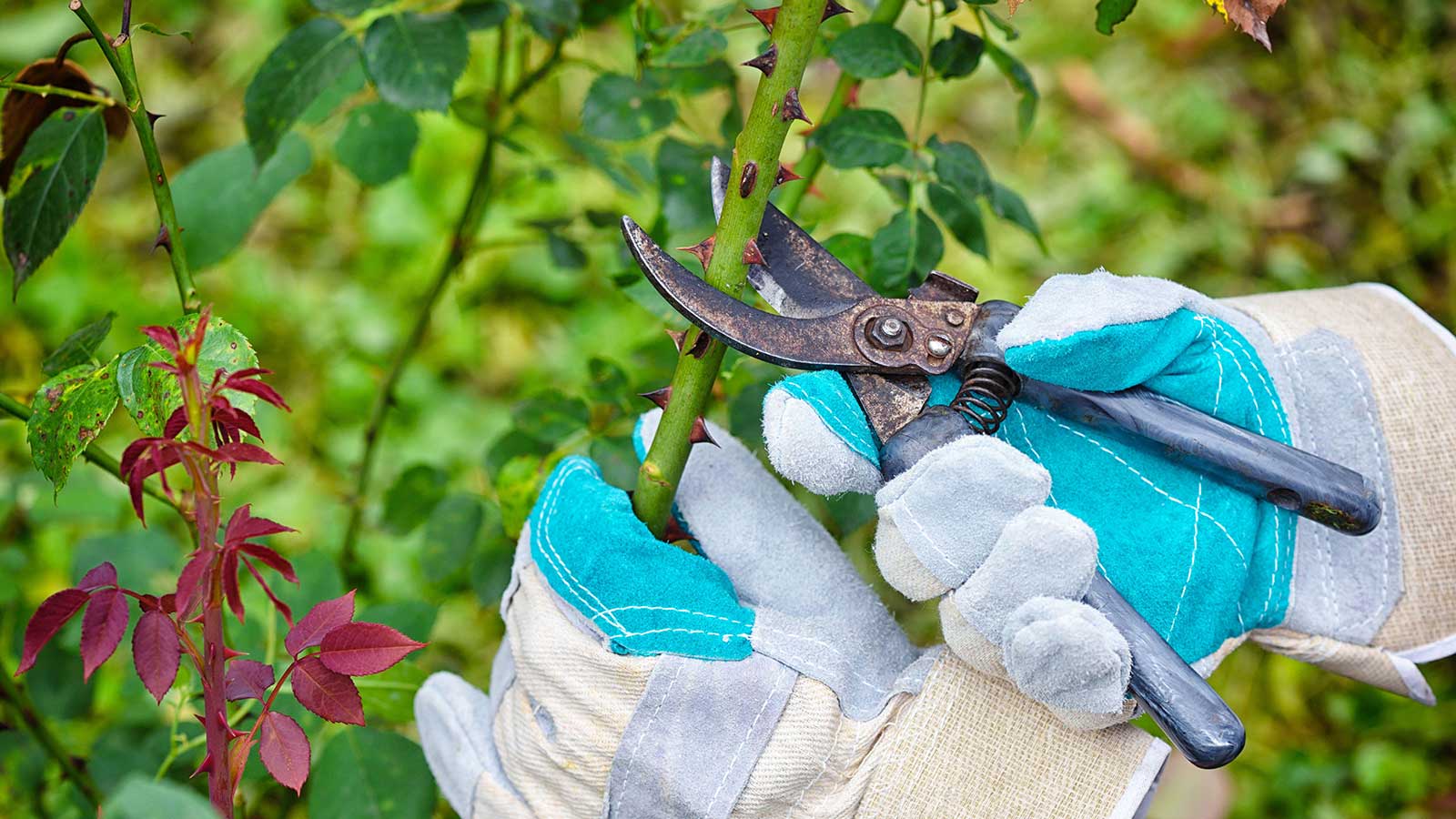

Pruning your roses at the right time is essential for keeping these plants thriving and flowering at their best. The majority, including most bush and climbing types, should be pruned when dormant in late winter – but it's important not to do this too early, or they can become susceptible to cold damage. 'Speak to any professional gardener and they will advise that pruning back your rose bushes too early could kill or seriously set back the health of the plant,' advises Homes & Gardens garden writer, Rachel Crow.
Rambling roses, however, are best routinely pruned in late summer. For repeat-blooming shrub roses – and shrub roses that don't produce hips – deadheading should also be part of your pruning routine. This is done throughout the flowering period.
It may seem confusing, but once you know the varieties of roses you're growing in your garden and the basics of how to prune roses, it doesn't have to be – especially with the help of this guide.
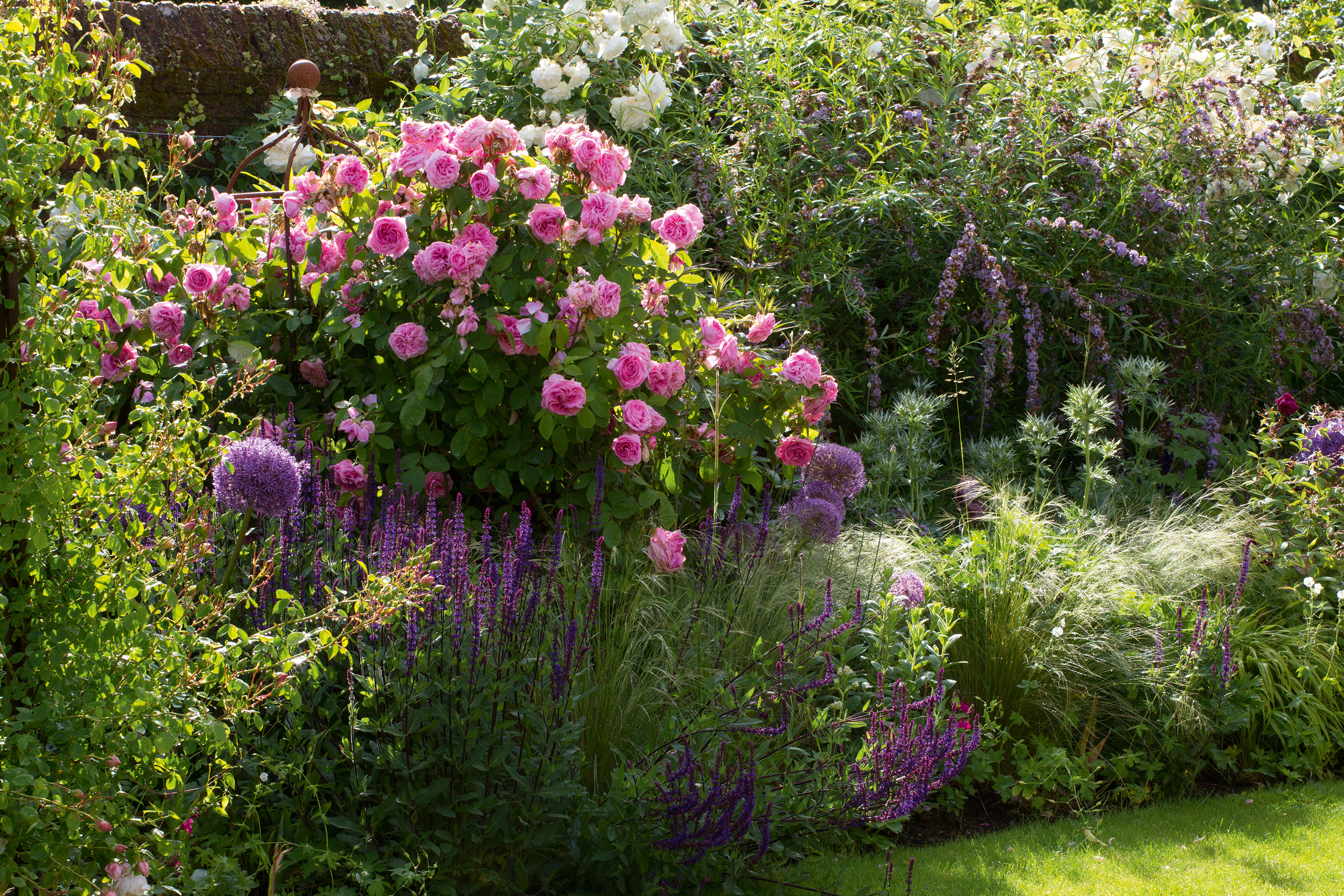
Most roses can be pruned in late winter
How your location impacts when to prune roses
Your USDA hardiness zone plays a part in when to tend to your rose garden with secateurs – such as these ones from Amazon – in hand.
'While there are expert guidelines on what time of year is best to prune roses, ultimately it will depend on where you live,' says Rachel Crow. 'The USDA Plant Hardiness Zone Map is your go-to reference for growing and tending plants, depending on the temperature, weather and other climate factors in your region.
'Generally, it's best to prune your roses in late winter or early spring, in the sweet spot after hard frosts and before the leaf buds on your plants have begun to open. Exactly when that is will depend on the weather conditions in your region.'
'If your garden is in a frost pocket in which cold air can linger, avoid making any rose pruning mistakes and wait a few more weeks until it becomes warmer at night,' adds John Negus of Amateur Gardening magazine.
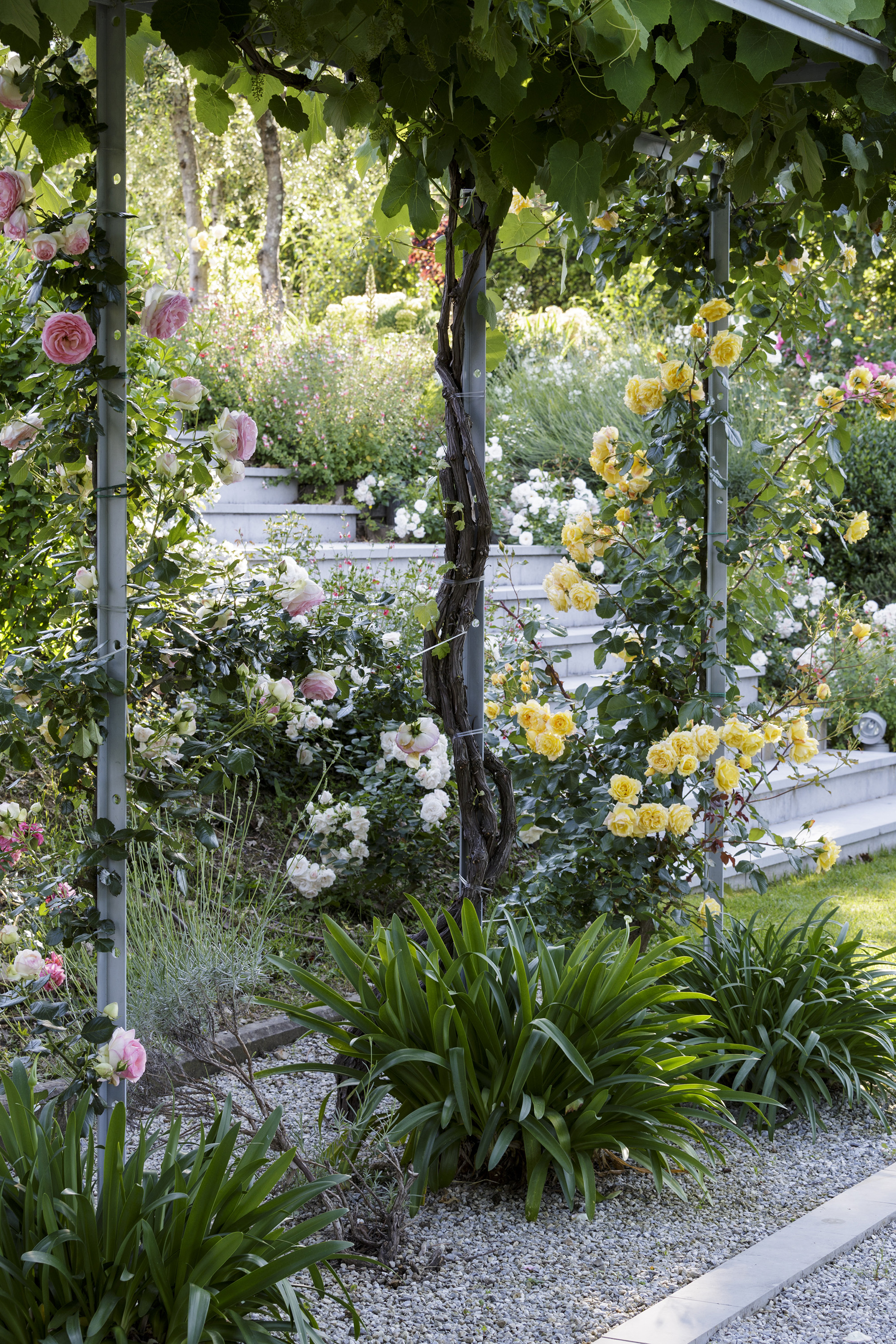
A rose garden is a beautiful sight in the summer
Pruning roses in winter
'Roses are tough plants and many respond well to a hard prune in winter, particularly bush forms like hybrid teas and floribundas,' advises head gardener and RHS Master of Horticulture, Benjamin Pope, in his book What to Grow, Sow and Do, available on Amazon.
He advises cutting back the previous season's growth, leaving a section of the new stem with three or four healthy buds. Pruning climbing roses should also be done in winter.
If you are considering when is it too late to prune roses, this 'can be done in later December, January or February in regions where the winters are mild. In regions with cold winters, pruning should be delayed until spring growth is just starting,' advises esteemed rose grower David Austin, of David Austin Roses. 'Prune before buds lengthen and are easily broken,' adds John Negus.
There are some exceptions when caring for your roses in this way. 'Bare-rooted roses will usually have been sufficiently pruned before you receive them. If not, they can be cut down to 18 inches in height,' says David Austin in his book English Roses, available on Amazon. 'No further pruning is required in that season.'
Rambling roses are another exception, which are normally pruned in summer, once flowering has finished (see below).
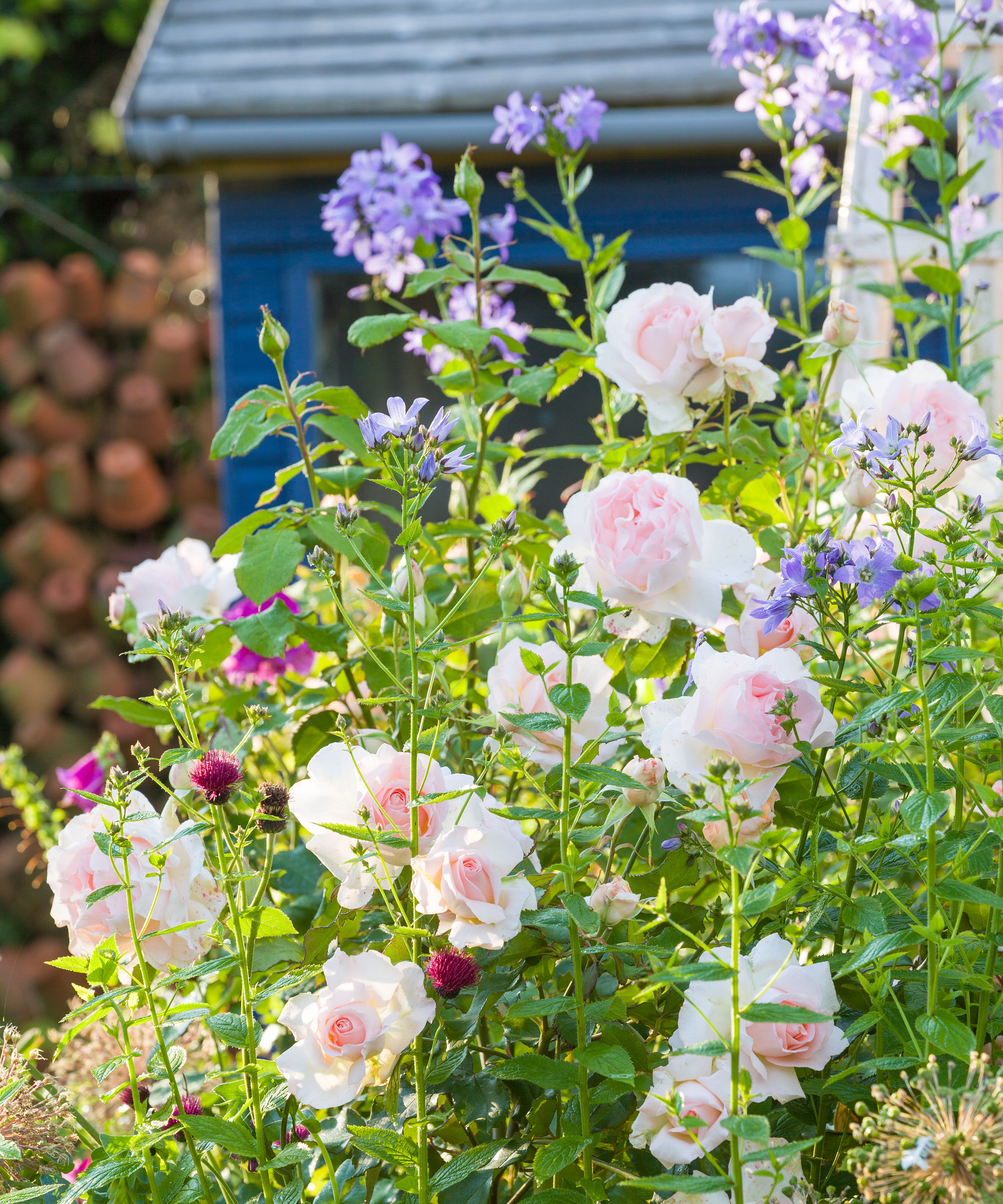
Some roses can be pruned at the end of summer
Pruning roses in summer
Rambling rose varieties that produce long and whippy stems during the growing season are best pruned in summer.
These can begin to look untidy, and the rambling stems can be prone to damage, explains Homes & Gardens garden expert, Rachel Crow.
'Rambling roses are best pruned in summer when their single flush of flowers is over and the stems are most flexible for tying in,' says the experts from Amateur Gardening. 'The rose should be fed in spring before growth re-starts.'
However, it's unlikely you'll need to do this in the first few years while they grow their framework of stems for you to tie back. During this time, all that is needed is to remove the dead, diseased and damaged wood, as well as any weak stems that are unlikely to flower or grow well, the experts continue.
'Once their growing area is filled, their readiness to produce new stems from the base should be encouraged by cutting out one in three of the main stems each year. Choose the oldest stems, and of the remaining growth thin out excess stems, cut back flowering spurs to their point of origin and shorten side shoots by up to two-thirds to encourage the production of flowering spurs.'
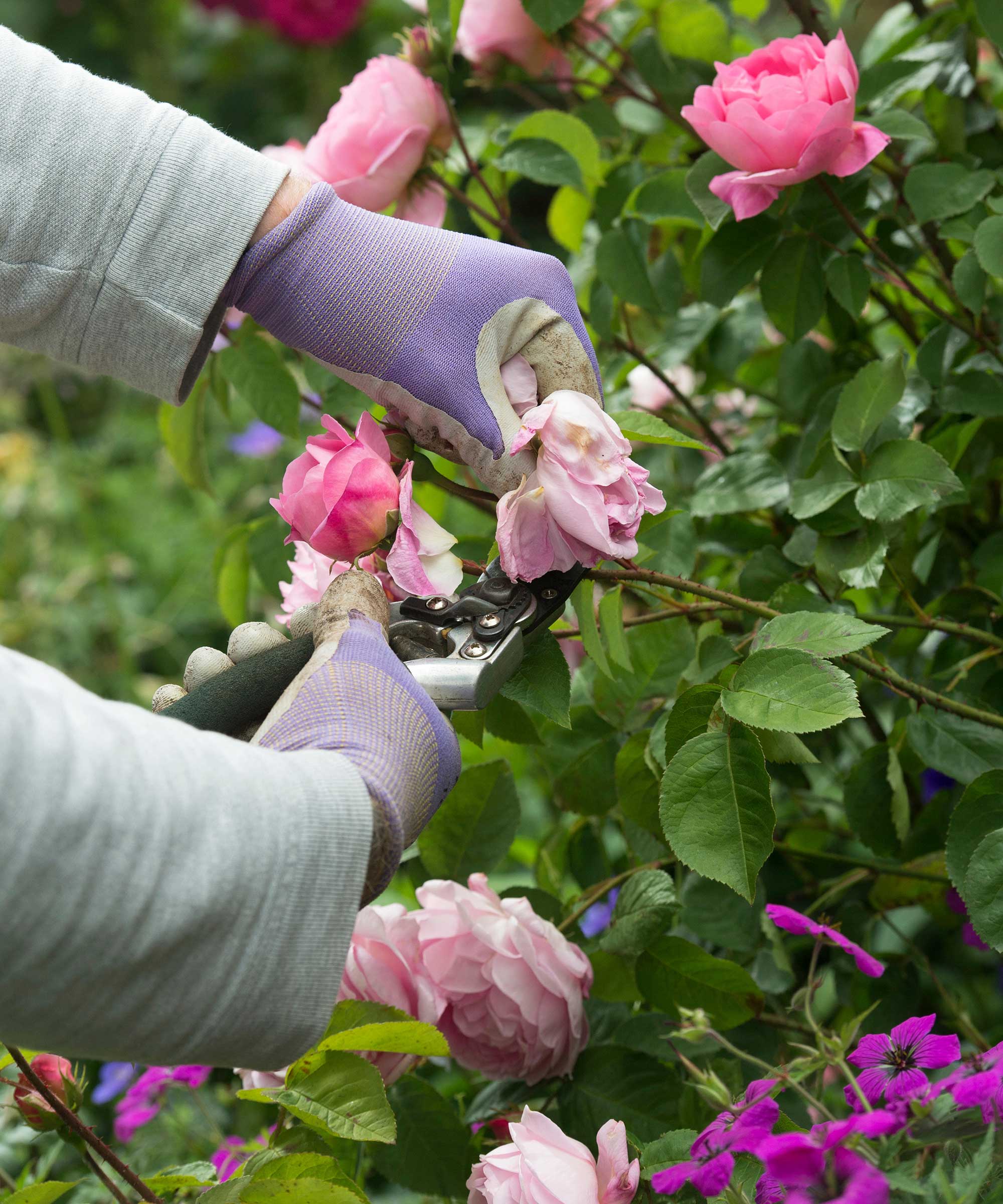
Deadheading will tidy your rose up, and for repeat-bloomers, will encourage more flowers
FAQs
When should you deadhead roses?
Deadheading roses is when you remove the spent flowers and it results in a neater look. What's more, for repeat-blooming varieties, it encourages another flush of flowers.
Snip off the dead flowers when needed throughout the flowering months, but leave the last blooms of the season on for hip-producing varieties. These will add interest throughout fall and provide food for birds.
When should you do renovation pruning on your rose?
Old roses that are no longer flowering as desired can be renovated by pruning. This can often be the case with climbing roses, where the flowers are only growing up high.
Renovation pruning is best done during the dormant period in winter, says John Negus of Amateur Gardening magazine. 'The method aims to renew the plant over a three-year period, or longer if necessary. In any single year, cut up to one-third of the main stems back to within 12in of ground level.'
Sign up to the Homes & Gardens newsletter
Design expertise in your inbox – from inspiring decorating ideas and beautiful celebrity homes to practical gardening advice and shopping round-ups.
Andrea has been immersed in the world of homes, interiors and lifestyle since her first job in journalism, on Ideal Home. She went from women's magazine Options to Frank. From there it was on to the launch of Red magazine, where she stayed for 10 years and became Assistant Editor. She then shifted into freelancing, and spent 14 years writing for everyone from The Telegraph to The Sunday Times, Livingetc, Stylist and Woman & Home. She was then offered the job as Editor on Country Homes & Interiors, and now combines that role with writing for sister title homesandgardens.com.
-
 Zooey Deschanel and Jonathan Scott's breakfast nook is an innovative, effective use of kitchen space – it turns a 'dead area' into a cafe-style corner
Zooey Deschanel and Jonathan Scott's breakfast nook is an innovative, effective use of kitchen space – it turns a 'dead area' into a cafe-style cornerJonathan and Zooey have situated an eccentric yet elegant dining area in what may have been an otherwise underused corner
By Hannah Ziegler Published
-
 6 things you should never throw in the trash – and what to do for safe disposal instead
6 things you should never throw in the trash – and what to do for safe disposal insteadFrom batteries to space heaters, experts reveal what not to throw
By Andy van Terheyden Published